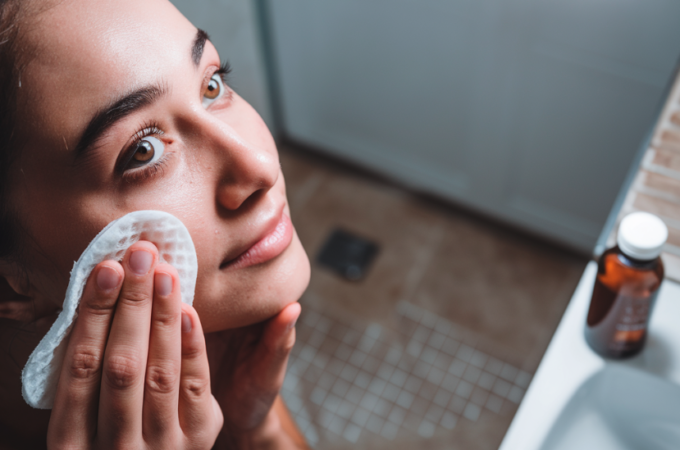
Cleansing: A Complete Guide for a Perfect Skin
Cleansing your skin is a crucial step in any skincare routine, and it offers several benefits for maintaining healthy and radiant skin. Among its advantages we should highlight the following:
- Removes impurities: Cleansing helps to remove dirt, makeup, and other impurities from the skin, leaving it clean and refreshed as well as ready for the hydration process.
- Balances oil production: the right cleansing process and the right products can help balance the skin’s oil production, even for people with combination or oily skin.
- Enhances absorption of skincare products: cleansing creates a clean canvas for the application of other skincare products. When the skin is free of impurities, serums, moisturizers, and treatments can penetrate more effectively.
- Reduces dullness: regular cleansing helps combat dullness by removing accumulated dead skin cells and promoting a brighter, more radiant complexion.
It is important to highlight that skincare products can vary, so it is essential to choose a cleanser that matches your skin type and concerns. Gel soft cleansers are skincare products designed to cleanse the skin gently with a lot of advantages.
How To Use A Gel Soft Cleanser: A Useful Guide
As stated before, gel soft cleansers can be the perfect ally to your skincare routine but it is crucial to know how to use it properly in order to take advantage of all the possible benefits. If you follow these steps, you can guarantee the perfect cleansing in your skincare routine before you apply the hydrating products.
- Wet your face: you should always start by wetting your face with some warm water. This helps to open up your pores and prepare your skin for cleansing.
- Apply the cleanser: take a small amount of the soft gel cleanser and apply it to your face. You can either use your fingertips or a gentle cleansing brush.
- Massage in circular motions: gently massage the cleanser into your skin using circular motions. Be sure to cover your entire face, including the forehead, nose, cheeks, and chin.
- Rinse thoroughly: after massaging the cleanser into your skin for about 30 seconds to a minute, rinse it off with water, preferably warm. Make sure all the cleanser is removed from your skin.
- Pat dry: gently pat your face dry with a clean towel. Avoid rubbing your skin, as this can cause irritation.
Cleansing And Exfoliating: Not Identical Twins
Cleansing and exfoliating are both important steps in a skincare routine, but they serve different purposes and involve different processes. It is important to know the difference between cleansing and exfoliating in order to get better results and not to damage your skin.
Purpose: Whereas cleansing is the process of removing dirt, oil, makeup, and other impurities from the surface of the skin, exfoliating is the process of removing dead skin cells from the skin’s surface, promoting cell turnover and a smoother complexion.
Mechanism: As regards mechanism, cleansers work by emulsifying and lifting away dirt and remains, allowing them to be rinsed off with water. However, exfoliants contain ingredients that either physically (scrubs or brushes) or chemically (acids or enzymes) remove dead skin cells, allowing newer, healthier cells to emerge.
Frequency: Cleansing is typically done twice a day—morning and night—as a regular part of a skincare routine to maintain clean and healthy skin. On the contrary, exfoliation should be done less frequently than cleansing, usually 1-3 times a week, depending on the product and your skin type. Over-exfoliation can lead to irritation.
Products: While cleansers come in various forms, such as gels, foams, creams, or oils, and they are often tailored to different skin types (e.g., oily, dry, sensitive), exfoliants come in various forms, including physical exfoliants (scrubs), chemical exfoliants (e.g., alpha hydroxy acids – AHAs, beta hydroxy acids – BHAs), and enzyme-based exfoliants.
Benefits: on the one hand, cleansing helps to prevent clogged pores, reduce the risk of breakouts, and create a clean canvas for the application of other skincare products. On the other hand, exfoliating helps improve skin texture, reduce the appearance of fine lines, unclog pores, and enhance the effectiveness of other skincare products by allowing them to penetrate the skin more effectively.
Important!
While both cleansing and exfoliating are essential for a well-rounded skincare routine, it’s crucial not to overdo either process. Over-cleansing or over-exfoliating can lead to irritation, dryness, and other skin issues. It is highly advisable to choose products based on your skin type and concerns and to follow a consistent routine. Always remember that if you have specific skincare concerns or are unsure about which products to use, consulting with a dermatologist can be the right decision since they can provide personalized guidance.




